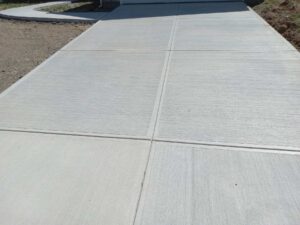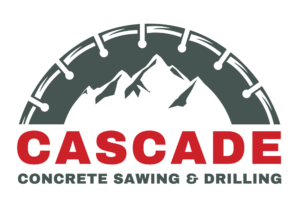Ever walked on a wet sidewalk and felt your foot slip just a bit? That’s where concrete grooving comes in – it’s a process that adds tiny channels (grooves) to concrete surfaces to improve traction and drainage.
This might seem like a small detail, but concrete grooving can make a big difference in the safety, functionality, and even the lifespan of concrete floors, walkways, and roadways.
So, how exactly does concrete grooving work?
Understanding Concrete Grooving
Concrete grooving is a process where grooves are cut into a concrete surface to improve traction and reduce the risk of hydroplaning. Imagine it like adding tread to a tire; these grooves help keep things from getting too slippery when wet. It’s a common technique used on concrete floors, sidewalks, ramps, and even in places like dairy barns to keep cows from slipping!
The Tools and Techniques of Grooving
Concrete grooving is typically done after the concrete has cured (dried and hardened). Special tools called concrete groovers are used to create the grooves in the concrete surface. These groovers can be hand-held or machine-operated, depending on the size and complexity of the project.
The cutting tools used in concrete groovers are usually made of industrial-grade diamonds, similar to the ones found in saws for cutting concrete or tile. These diamond blades create clean, precise diamond cuts in the concrete, forming the desired groove patterns. The spacing, depth, and design of the grooves can be customized based on the specific application.
Common Types of Groove Patterns
Straight grooves: These are typically used on flat surfaces like walkways and ramps to improve drainage and traction.
Transverse grooves: These grooves run perpendicular to the direction of travel, often used on roadways and airport runways to prevent hydroplaning (loss of traction due to a layer of water between the tire and the road surface).
Curved or herringbone grooves: These patterns are often used in dairy barns and other animal holding areas to provide better footing for animals.

The Benefits of Concrete Grooving
While concrete grooving can add a decorative touch to a concrete surface, its primary purpose is to enhance functionality and safety.
Let’s explore some of the key benefits.
Improved Traction: Smooth concrete surfaces can be slippery, especially when wet. Grooves create channels for water to drain, reducing the risk of skidding and falls. This is especially important on walkways, ramps, and industrial floors where spills are common.
Reduced Hydroplaning: Heavy rainfall can create a layer of water on the surface of roadways and airport runways. Grooves help channel this water away, preventing hydroplaning and improving vehicle control.
Enhanced Drainage: Grooves allow water to drain more efficiently from concrete surfaces. This is beneficial for both indoor and outdoor applications.
Longer Lifespan: By preventing water from pooling on the surface, concrete grooving can help reduce the risk of cracking and spalling (flaking) of the concrete. This can extend the lifespan of the concrete and reduce maintenance costs.
Increased Safety: Improved traction and drainage contribute to a safer environment for pedestrians, drivers, and animals walking on grooved surfaces.
When Does Concrete Need Grooving?
Concrete grooving can be used on a variety of new and existing concrete surfaces.
Here are some common applications:
Roadways and bridges: Safety grooving is commonly used on high-traffic roads and airport runways to prevent hydroplaning.
Walkways and ramps: Grooves improve traction on walkways, especially in areas prone to moisture or spills.
Industrial floors: Grooved floors are ideal for factories, warehouses, and other industrial settings where spills and wet conditions are common.
Parking garages: Grooves can improve traction in parking garages, reducing the risk of slipping for pedestrians and drivers.
Dairy barns and other animal holding areas: Grooved floors provide better footing, which can help prevent lameness (foot problems in animals).
How is Concrete Grooving Done?
The process of concrete grooving is pretty straightforward:
- Preparation: The concrete surface is cleaned and marked for grooving.
- Cutting: Using a grooving machine or concrete groover, grooves are cut into the concrete slab.
- Spacing: The spacing of the grooves is crucial. Proper spacing ensures optimal drainage and traction.
- Finishing: After cutting, the grooves are cleaned and any debris is removed
More Questions About Concrete Grooving?
Concrete grooving is a strategic and beneficial process that enhances the safety, functionality, and overall lifespan of concrete surfaces.
Compared to replacing a damaged concrete surface, concrete grooving is a relatively cost-effective way to improve traction and drainage. It’s also a proactive approach to safety, potentially preventing accidents and injuries.
Need assistance with your concrete projects? Call Cascade Concrete at 253-872-7578 to speak with a concrete sawing and drilling specialist today.



